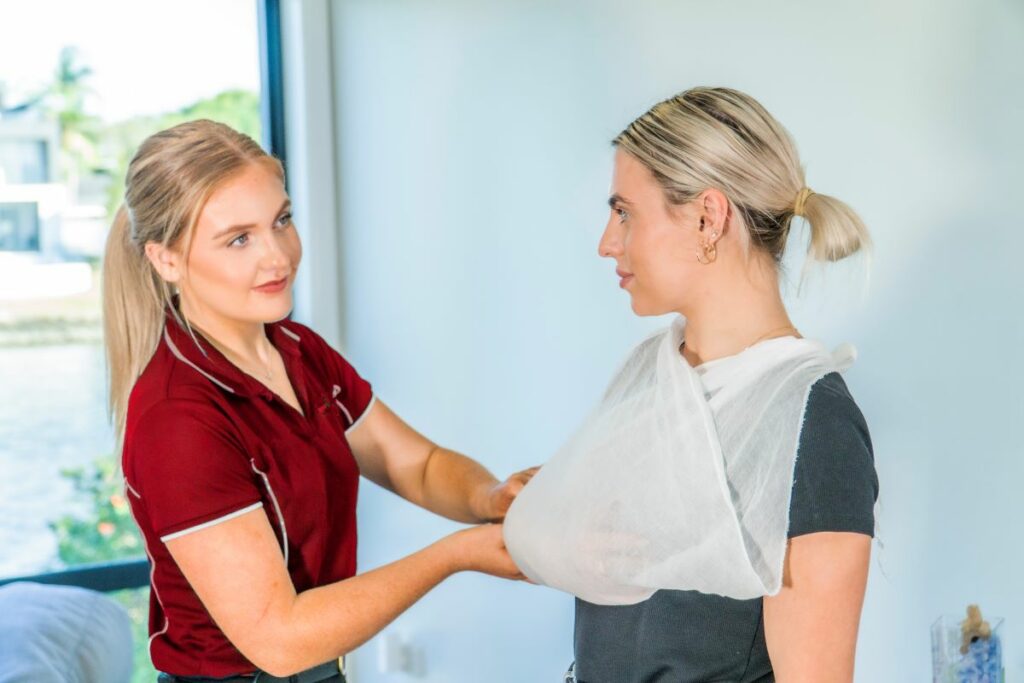Introduction
In the world of sports, the adventure of competition is frequently gone along with by an underlying danger-- heart attack. While athletes press their restrictions and motivate us with their feats, the truth is that unexpected heart events can take place anytime. This post looks into Sports-Related Heart attack: The Relevance of Immediate CPR, shedding light on the critical duty that Cardiopulmonary Resuscitation (MOUTH-TO-MOUTH RESUSCITATION) plays in saving lives during these emergency situations.
From comprehending the mechanics behind cardiac arrest to discovering innovative resuscitation skills, this comprehensive guide intends to furnish you with important knowledge and resources. Whether you're a coach, a parent, or merely a person that delights in leisure sports, recognizing just how to respond can make all the difference.
Understanding Sports-Related Cardiac Arrest
What is Sports-Related Cardiac Arrest?
Sports-related heart attack refers to a sudden loss of heart function in people taking part in sports activities. It can occur to any person, regardless of age or physical fitness level. When a professional athlete experiences heart attack on the field or court, instant activity is important for survival.
The System Behind Heart Arrest
Cardiac apprehension happens when the heart's electric system malfunctions, bring about an ineffective heart beat. This disturbance avoids blood from streaming to essential organs, including the brain. Common causes consist of congenital heart defects, hypertrophic cardiomyopathy, and arrhythmias.

Statistics on Heart attack in Sports
Recent research studies highlight community first aid classes near me a disconcerting price of heart attacks among professional athletes:

- Approximately 1 in 50,000 athletes experiences a heart event. Survival prices differ substantially based on immediate reaction times.
The Function of mouth-to-mouth resuscitation in Conserving Lives
What is CPR?
Cardiopulmonary Resuscitation (MOUTH-TO-MOUTH RESUSCITATION) is a lifesaving technique targeted at manually protecting mind feature till additional steps are taken. Administering mouth-to-mouth resuscitation can double or triple opportunities of survival after cardiac arrest.
Why Immediate Activity Matters
When it involves heart attack, every 2nd counts. After simply 4 mins without oxygen-rich blood flow, irreversible mental retardation can take place. This makes prompt CPR crucial for sustaining life until specialist help arrives.
CPR Conserving Lives: Real-Life Examples
Numerous instances exist where timely CPR management has conserved lives:
- In 2021, a high school basketball player broke down throughout method yet endured thanks to quick-thinking teammates that did CPR.
How to Perform mouth-to-mouth resuscitation Effectively
Basic Steps for Adult CPR
Check responsiveness; if unresponsive, require emergency situation assistance. Begin chest compressions at a deepness of about 2 inches and at a price of 100-120 compressions per minute. If educated, give rescue breaths in a ratio of 30 compressions to 2 breaths.Incorrect Compression Depth: A Common Mistake
One significant error throughout CPR is falling short to use enough compression depth. Research study shows that compressions must be deep adequate to efficiently pump blood but not so community first aid training classes deep as to create injury.
Infant and Kid mouth-to-mouth resuscitation Techniques
Different age require particular methods:
- For infants: Utilize two fingers and press concerning 1.5 inches deep. For kids: Make use of one hand for compressions with similar deepness guidelines as adults.
Advanced Resuscitation Skills
AED: How to Use It Effectively
An Automated External Defibrillator (AED) can bring back typical heart rhythm during a cardiac occasion:
Turn on the AED and comply with voice prompts. Apply pads as indicated on the device. Allow AED to analyze heart rhythm before continuing mouth-to-mouth resuscitation if advised.CPR and First Aid Combination Training
Combining CPR training with emergency treatment enhances readiness for emergencies:
- Local courses usually supply thorough programs covering both areas.
Household Preparedness for Emergencies
Creating Work environment Emergency situation Plans
Organizations need to have clear procedures for responding to clinical emergencies like cardiac arrest:
- Designate personnel learnt mouth-to-mouth resuscitation and first aid.
Household Readiness Measures
Consider having an AED offered in the house if someone has actually known heart concerns or if you have energetic young athletes involved in sports.
Local Resources for Discovering CPR
Finding Regional mouth-to-mouth resuscitation Classes Near You
Many recreation center and health centers provide neighborhood mouth-to-mouth resuscitation accreditation training courses:
- Check online platforms for routines and availability.
Online mouth-to-mouth resuscitation Certification Options
With active routines becoming common, on-line accreditation training courses offer flexibility without giving up top quality education.
Frequently Asked Concerns (Frequently asked questions)
What are the indications of approaching cardiac arrest?
Signs might include unexpected collapse, lack of reaction, unusual breathing patterns such as gasping or no breathing at all.
Do I need special tools for performing CPR?
While basic mouth-to-mouth resuscitation doesn't need unique equipment aside from your hands or mouth-to-mouth breaths if educated, having access to an AED can significantly improve survival chances.
How usually needs to I restore my CPR certification?
Typically every 2 years; however, examine local requirements as they may vary by area or organization type.
Can I make use of an AED on children?
Yes! A lot of AEDs come equipped with youngster pads ideal for use on more youthful clients; always adhere to gadget instructions.
What's the success rate of bystander-administered CPR?
Studies suggest that immediate bystander-administered mouth-to-mouth resuscitation can increase survival prices significantly-- frequently increasing them when supplied within minutes.
li20/ol3/hr8hr8/##
Conclusion
As we've checked out throughout this short article titled "Sports-Related Heart attack: The Relevance of Immediate CPR," understanding exactly how to efficiently react during these emergency situations can not be overstated-- it saves lives! From finding out proper strategies like incorrect compression deepness monitoring and utilizing AEDs properly, each piece contributes towards building understanding and readiness within neighborhoods involved in sports activities.
By outfitting ourselves with understanding through local classes or on the internet qualifications focused on sophisticated resuscitation abilities-- every specific ends up being encouraged versus possible disasters that might otherwise result from delays in action adhering to unexpected cardiac cases during sports events!
Always keep in mind-- the rule holds: "CPR constantly restarts hearts," due to the fact that when seconds matter most-- your expertise might be what transforms despair right into hope!